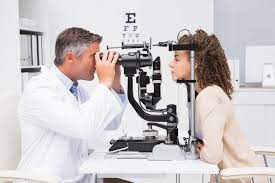What are the 10 most common eye drops?
In this article we will describe what are the 10 most common eye drops.

1. Artificial tears
Used to lubricate and moisturise the eyes, especially in cases of dry eye syndrome.
2. Antibiotic eye drops (e.g. 1% chloramphenicol)
Prescribed to treat bacterial eye infections such as conjunctivitis (pink eye) or corneal ulcers.
3. Antihistamine eye drops (e.g. antazoline sulfate)
Used to relieve itching, redness, and discomfort caused by allergies or allergic conjunctivitis.
Note. There are mast cell stabilisers like sodium cromoglicate, that are used in a similar way.
4. Decongestant eye drops
Help reduce redness and swelling in the eyes by constricting blood vessels, often used for temporary relief from eye irritation caused by allergies or minor irritants.
5. Lubricating eye gels
Thicker than regular artificial tears, these gels provide longer-lasting lubrication for severe dry eye conditions, especially at night.
6. Glaucoma eye drops (e.g. timolol)
These drops help lower intraocular pressure to manage glaucoma and prevent potential vision loss.
7. Corticosteroid eye drops (e.g. dexamethasone)
Prescribed to treat inflammation in the eyes caused by conditions such as uveitis, scleritis, or severe allergic reactions.
8. NSAID (nonsteroidal anti-Inflammatory drug) eye drops (e.g. diclofenac)
Used to manage pain, inflammation, and discomfort after eye surgery or in conditions like postoperative inflammation.
9. Mydriatic eye drops (e.g. tropicamide)
These drops dilate the pupils, making it easier for eye doctors to examine the internal structures of the eye during an eye exam.
10. Cycloplegic eye drops
Used to temporarily paralyze the muscles in the eye’s ciliary body, aiding in the measurement of refractive error during eye exams or for certain eye conditions.
Please note that these are general categories of eye drops, and specific brand names and formulations may vary.
Summary
We have described what are the 10 most common eye drops. We hope it has been helpful.
Last Reviewed on 8 March 2024
